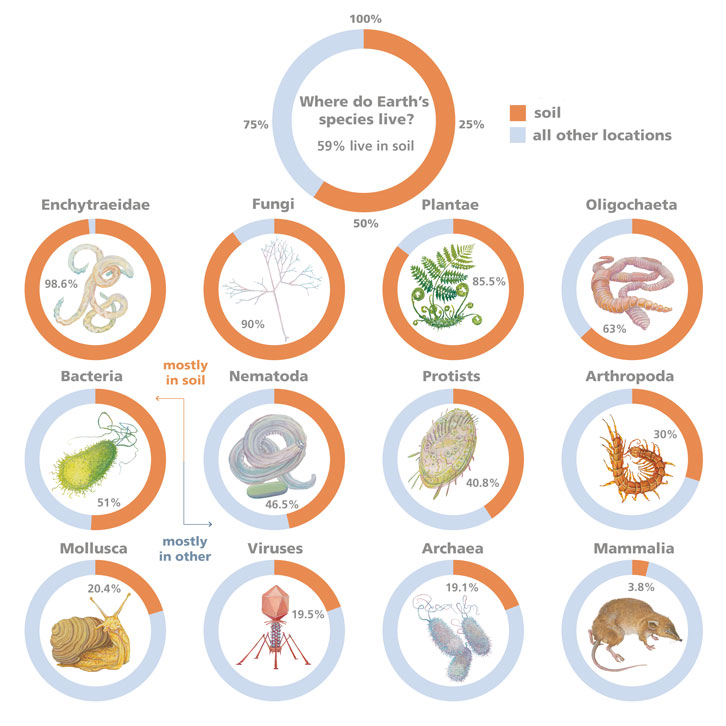
This Article From Issue
January-February 2024
Volume 112, Number 1
Page 8
DOI: 10.1511/2024.112.1.8
A rich and diverse assortment of organisms spanning the tree of life lives in soil, but enumerating exactly which and how many organisms has proven challenging. Soils vary greatly by location, and the organisms are tiny and difficult to access. Previous efforts to catalog soil biodiversity considered only certain types of organisms, or reported values for diverse groups without partitioning species that live in soil versus other habitats.

M. A. Anthony, et al. 2023. Proceedings of the National Academy of Sciences of the U.S.A. e2304663120. Illustrations by Michael Dandley.
To address this lacuna, we reviewed the global soil biodiversity literature and compiled data on organisms from the simplest microbes to the most complex mammals. We found that soil is the likely home to 59 percent of the species on Earth—roughly double previous estimates—making it the most biodiverse singular habitat.
Soil organisms mediate unique functions that humans and other animals rely on for food, fiber, and bodily and planetary health. People cannot conserve or restore biodiversity that hasn’t been observed, counted, and measured, so our study will help ensure that soil organisms are accounted for in the future.

American Scientist Comments and Discussion
To discuss our articles or comment on them, please share them and tag American Scientist on social media platforms. Here are links to our profiles on Twitter, Facebook, and LinkedIn.
If we re-share your post, we will moderate comments/discussion following our comments policy.